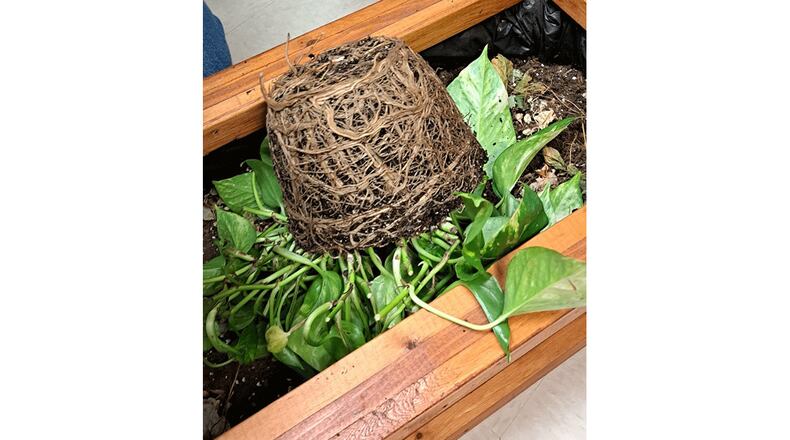Q: I almost purchased a plant that turned out to be terribly root-bound when it slipped from its pot. Can anything be done when roots are this tangled? Andrew Rissler, North Decatur
A: When roots fill a pot like this, they can’t easily absorb the moisture and nutrients they need. But even when roots are densely packed, there are ways to deal with the situation. The first is to soak the root mass in a bucket of water for several hours and then dig out as much soil as possible. Once you can see where the roots originate, grab some sharp clippers and start pruning. I’m comfortable with removing a third of the roots of a houseplant and up to a quarter of the roots of a potted shrub. Once the roots are removed, you can put the plant back in the same size pot, if you want the plant to stay the same size, or in a pot 1 inch larger in diameter if you want it to grow bigger. Use high-quality potting soil to fill the pot.
Q: I am in charge of a serviceberry tree that will be part of a religious ceremony. It will have to be brought indoors several times during an upcoming weekend. Will this harm the tree or affect its dormancy? Bill Witherspoon, Decatur
A: As long as you keep it cool and dark most of the time, it should not suffer harm. The only risk would be if it were planted during or just before frigid weather. No plant likes being subjected to cold temperatures that it’s not ready for. To be on the safe side, when your ceremony is over, put the tree in a carport or other sheltered spot for 10 days before you plant it. It will regain whatever dormancy it lost and can then be put in its final spot outdoors.
Q: My wife and I are building a home and are wondering what would be good to plant in our yard: trees, shrubs, etc. We like things that bloom at different parts of the year so there is always some color and would love some fast-growing trees for fall color. We’re coming from Los Angeles, so the world outside of succulents and palm trees is a bit new to us. Alex Scott, DeKalb County
A: I could give you list upon list of plants that grow well here, but you would be much better off hiring a local landscaper. Look online for local Facebook groups and post a request for recommended landscapers on NextDoor.com. You will get the best advice from someone who can visit your site and see the different environments in real time. A good designer will know instinctively what plants your landscape will support. In the meantime, you can familiarize yourself with our typical landscape plants at bit.ly/GAlandplants.
Email Walter at georgiagardener@yahoo.com. Listen to his occasional garden comments on “Green and Growing with Ashley Frasca” Saturday mornings on 95.5 WSB. Visit his website, www.walterreeves.com, or join his Facebook Page at bit.ly/georgiagardener, for his latest tips.
About the Author
The Latest
Featured

